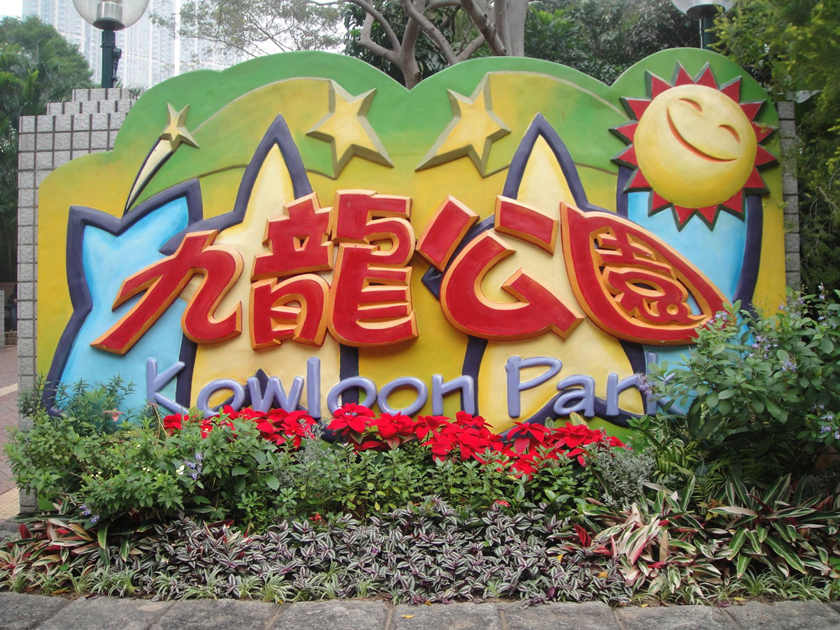Chinese Name: 九龙公园 Pronunciation: jiǔ lóng gōng yuán
Building Time: 1970
Admission Ticket Fare: Free
Suggested Visiting Hours: 1-2 Hours
Best Visiting Time: All year round
Park Area: An area of about 13.5 hectares
Address: Austin Road, Tsim Sha Tsui, Kowloon
Building Function: Kowloon Park is one of the most relaxed and pleasant places in Hong Kong. People can reach the traffic-filled city center from here on foot. And it is also the starting point for tourists to reach Bruce Lee’s Residence, Victoria Peak, Golden Bauhinia Square, and other popular spots.
| Places | Opening Hours | |
| Park Gate | From 5:00 to midnight | |
| Discovery Playground | 6:30-21:00 | |
| Aviary and Bird Lake | From 1st March - 31st October | 6:30-18:45 |
| From 1st November - 28th February | 6:30-17:45 | |
| Heritage Discovery Museum | From Monday to Wednesday, Friday and Saturday | 10:00-18:00 |
| Sundays and public holidays | 10:00-19:00 | |
| Christmas Eve and Chinese New Year Eve | Close at 17:00 | |
| Thursdays except for statutory holidays and the first two days of Chinese New Year |
Closed | |
| Sports Center | 7:00-23:00 | 7:00-23:00 |
| Swimming Pool | 6:30-12:00 | |
| 13:00-17:00 | ||
| 18:00-22:00 | ||
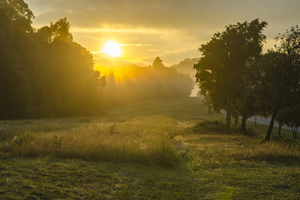
Kowloon Park consists mainly of striking fountains, a large courtyard of the traditional Chinese style, the ancient fort, the impressive Kowloon Mosque, a perfectly pruned hedge maze, and a beautiful and curiously shaped bird lake.
The Kowloon Park is a cultural icon of Hong Kong, covering more than 13 square hectares at the southern end of The Kowloon Peninsula, Hong Kong's most densely populated area.
Kowloon Park is considered to be one of the best places to relax in Hong Kong. The park boasts over 3,300 square meters of open-air squares, a stunning array of birds, indoor pools, a gymnasium, and so much more to enjoy. The scenic parks and tree-line alleyways create wonderful walking and cycling for all abilities.
Hong Kong had the least annual temperature variation. The subtropical climate makes it one of the most comfortable parks in the world, allowing visitors to bathe in warm sunshine almost all year round.
Around Kowloon Park, wide streets, towering office towers, and huge shopping malls have sprung up. All of these convey the impression of a modern, 21st-century city. However, Kowloon Park remains a very enjoyable and relaxing place, in stark contrast to the hustle and bustle of the city.
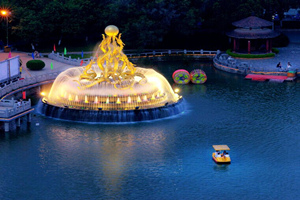
In 1842, Hong Kong and its surrounding areas came under British control. The origins of Kowloon Park can be traced back to a barracks set up by British colonists near Victoria Harbor in 1863. In 1865, the barracks were named Kowloon West II Battery. In 1989, it was redeveloped as a playground. In 1997, Kowloon West II Battery was listed as a Grade I Historic Building by the Antiquities and Monuments Office in Hong Kong.
When it comes to Kowloon Park, we have to mention the origin of its name. In 1968, more than half a million people signed a letter, hoping that the Kowloon Park project could be named after Sun Yat-sen. Naming it Zhongshan Park is an important step in paying tribute to one of the greatest leaders of the East. Some residents were naturally disappointed when officials decided to name it Kowloon Park. Opinions vary, and no one can reach a unanimous conclusion, but most historians agree that "Kowloon" is not the name of the dragon, but refers to the emperor, who calls himself the ninth son of the dragon, which plays an important role in Chinese culture as a symbol of power and monarch.
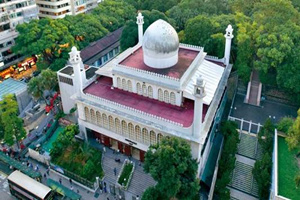
Tsim Sha Tsui, where the Kowloon mosque is located, is generally a major financial, commercial and cultural center of Hong Kong. Hong Kong is one of the world's most populous cities, with an estimated population of 7.5 million by the end of 2019. Hong Kong has a population of about 300,000 Muslims.
Kowloon Mosque is the largest mosque in Hong Kong, covering 1,500 square meters. The three-story building is carved out of white granite at the corner of Kowloon Park. Muslim soldiers of the British and Indian garrison thought that the Kowloon Mosque should have had a broader appeal and selected Indian and Islamic architectural styles. Indian soldiers and officers sponsored the project. Work began in 1896 and it was rebuilt between 1978 and 1984. For many years, the Muslim community in Hong Kong designed and oversaw the implementation of the project with the help of Rabita al-Alam al-Islami(MWL).
In the middle of the first floor is the main hall, flanked by offices, libraries, meeting rooms, and study centers. On weekdays, tables, chairs, and benches are placed in the middle of the hall, which are open to society for keynote speeches and other activities. On Fridays or major holidays, people move their chairs and tables away to worship. On the second floor, there are classrooms for Muslim children and adolescents to learn about religious knowledge. The third floor is the whole worship hall, separated from the middle, the left side of the worship hall is more spacious for men, and the right side of it is smaller for women.
The Bird Lake
The bird lake protects an amazing view with two bonds that provide significant habitat for many birds in a region with much biodiversity. The most attractive point of the bird lake is the striking pink flamingo.
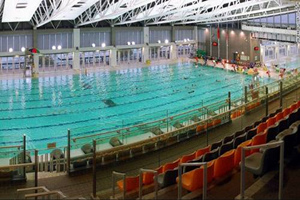
Kowloon Park also has four indoor swimming pools, which can accommodate 1,530 people. One was even built to Olympic standards in the hope of hosting future Olympic Games and major swimming events.
In Hong Kong, indoor pools have been open to the public since 1989, and their history is a microcosm of Kowloon Park. They maintain a true sense of style and design and are well received by citizens and tourists.
The depth of pools can be adjusted, and they are equipped with advanced electronic timing equipment. The main pool and diving pool are equipped with underwater viewing facilities. Five diving boards and one diving platform can be seen in the diving pool. A special set of instruments can spray air bubbles into the water to form a “cushion of air” and then help reduce the chances of injury during training.
Other facilities at the swimming pool venue include 1, 800 seats, clean and air-conditioning, swimming fitness room, a VIP room, an activity room, a video room, ten electronic entry machines, and more than 2, 000 coin lockers.
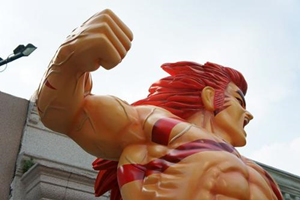
Hong Kong Avenue of Comic Stars is located in the east gallery of Kowloon Park. The entrance of Kowloon Park on Hong Chong Road serves as the most convenient entrance for visitors to go to Hong Kong Avenue of Comic Stars.
Walking on the Avenue of Comic Stars where ten famous stars left their fingerprints. It demonstrates the history of Hong Kong comic industry. Thirty painted sculptures of typical comic characters, about 1.8 to 3 meters high, have attracted a large number of visitors. Besides, a Cartoon Histories Development Gallery and a Cartoon Education Gallery have been built to show the history of Hong Kong comics, the process of making comics, tools, scenes of cartoon studios, and manuscripts.
For Hong Kong comic fans, every corner of the street is a reminder of the past. It is through these comics that many Hong Kong residents have come to know and love Chinese traditional culture and history.
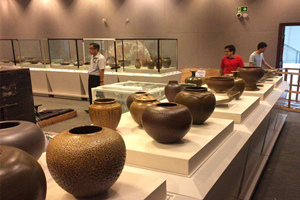
Hong Kong Heritage Discovery Museum is one of the most popular attractions in Kowloon Park. It's just a few minutes' walk from Hong Kong Avenue of Comic Stars. The air along the way is sweet and pure.
The Hong Kong Heritage Discovery Centre was first opened in 2005. It used to be the barracks in Kowloon Park, which is well preserved although it has a long history. Several exhibition galleries on the ground floor are permanently on display. Among their exhibits are pottery, glassware, ceramics and there are thematic galleries only be temporary on the first floor. Here is a place for tourists to look for treasure - no need to worry about where to find information, leaflets, and guides on Hong Kong heritage Trails, antiquities, and monuments.
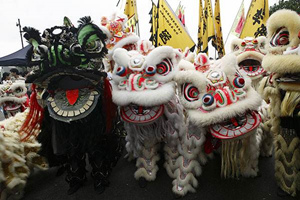
There are also excellent lion dances in Kowloon Park. These activities were highly praised by tourists. The lion dance is regarded as the most representative sport because it is the representative sport of traditional Chinese culture. These activities are sponsored by the Hong Kong Leisure and Cultural Services Department and open to the public free of charge. On a sunny Monday, it's really fun for people to work out or hold climbing competitions. This is an open-air event at the Sculpture Walk in Kowloon Park. Weather permitting, dragon dancing, and drumming can be seen from 2:30 to 4:30 on Sunday afternoon, making it a great weekend afternoon.
Regular martial arts performances entertain and educate many martial arts lovers. Martial arts, also known as kung fu, is a traditional sport practiced by people of all ages. Martial arts movies carry profound meaning and become the memory of a generation. Bruce Lee, Jackie Chan, and Jet Li are all famous kung fu movie stars in the world. The Kowloon Park hosts regular martial arts performances in the hope of promoting traditional Chinese culture and arousing respect for the classical culture. This is another event that can be seen at the Sculpture walk on Sunday.
Starting your visit at the southern entrance at Haiphong Road → Following the path to the left to a tree-shaded artificial pool with a fountain pumping water almost to the treetop level → Walking on to Conservation Corner located to the east of the park, near Nathan Road → Going forward a bit to Kung Fu Academy, which is a concrete area dotted with statues, and a good place to do Tai Chi in the morning → Heading north to a small maze → Going farther north to the Chinese Garden with an outdoor corridor, an ornamental pond, and a traditional Chinese summerhouse → walking westbound to the Bird Lake
Starting your visit from the path leading to an aviary → Walking on to the playground with remnants of the military battery → Making for a pleasant stroll in the northwest corner of the park
If you go to Kowloon Park from Hong Kong International Airport by bus, you can take bus No.A22, No.A23, or No.A20 and it takes about one hour (31 yuan).
If you go to Kowloon Park from Hong Kong Island(景光街Jĭng Guăn Road) by bus, you can take bus No.117 and it takes about one hour (8 yuan).
If you go to Kowloon Park from New Territories(彩虹站Căi Hŏng Station) by bus, you can take bus No.26 and it takes about 32 minutes(6 yuan).
By Subway
Take MTR Tsuen Wan Line and get off at Tsim Sha Tsui Station and exit A1.
Take MTR West Rail Line, get off at Austin Station, and exit F.
By Taxi
Chinese: 请带我去九龙公园。English: Please take me to Kowloon Park.
If you go to Kowloon Park from Hong Kong International Airport, it takes about 50 minutes (250 yuan).
If you go to Kowloon Park from Hong Kong Island (景光街Jĭng Guāng Road), it takes about 22 minutes(110 yuan).
If you go to Kowloon Park from New Territories (彩虹站Căi Hŏng Station), it takes about 22 minutes (110 yuan).
